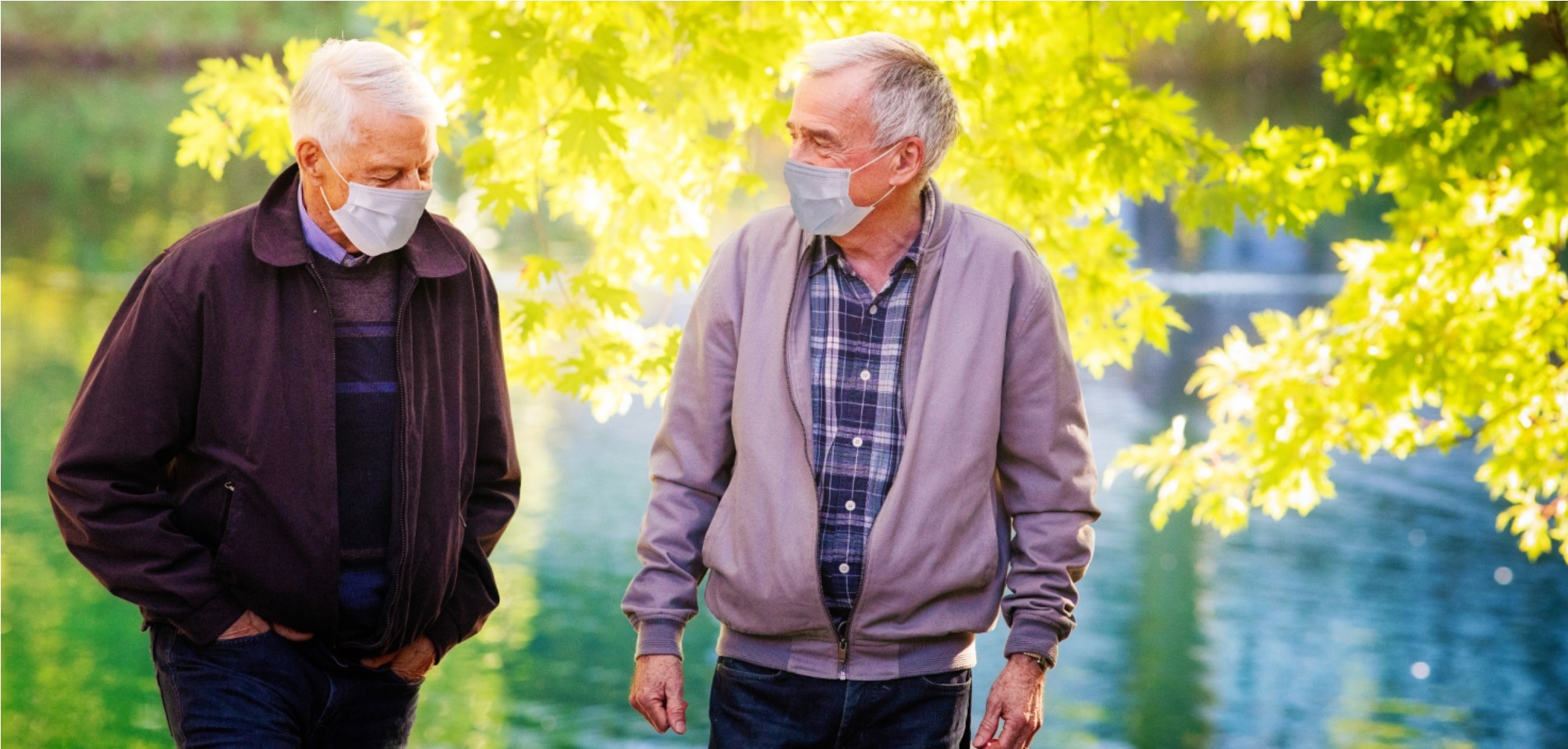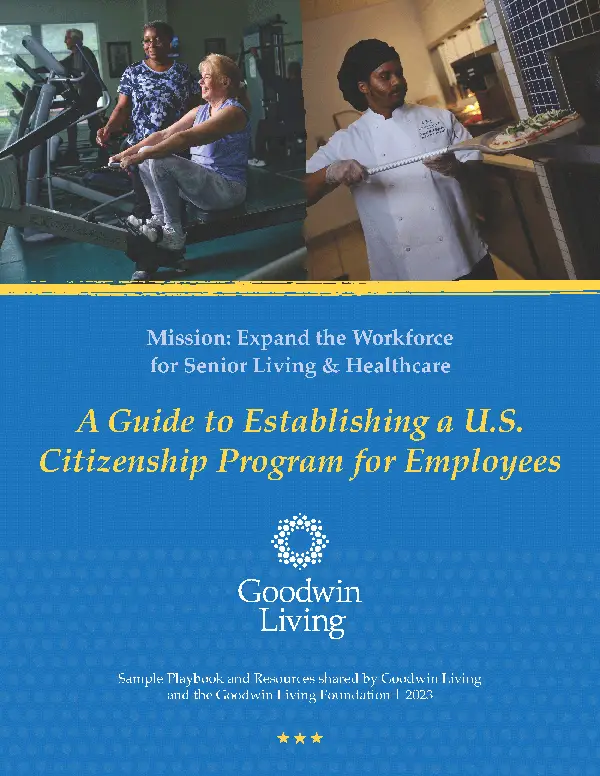
Resources - August 15, 2020
by Amanda Ranowsky
Experts are warning of the potential for a severe uptick of COVID-19 cases during flu season. As society continues to reopen, this fall forecast can be especially concerning to those who are at higher risk of developing severe symptoms if they are exposed to COVID-19.
To help address any concerns you might have, Goodwin Living recently offered a webinar that provided a physician’s perspective on the pandemic. Dr. Margaret Gloria, one of the medical leaders at Goodwin Living Incorporated, discussed the current COVID-19 landscape, the future of the virus and helpful suggestions for staying safe both now and throughout flu season.
As of August 15, 2020, the daily total of new confirmed cases globally was in the range of 280,000. Daily new confirmed cases in the U.S. make up around 65,000 of that number. For physicians like Dr. Gloria, tracking these trends is a key factor in making decisions about protocols necessary to keep older adults safe and healthy – which is a focus for Goodwin Living as we serve older adults throughout Northern Virginia, from the residents of our Life Plan Communities, to members of Goodwin Living At Home and those receiving care services from Home Health Services and Hospice.
In Virginia, we’re currently in Phase 3 of reopening. As of August 15, 2020, there have been a total of just over 105,000 confirmed cases in the state of Virginia, with more than 37,000 of those cases in Northern Virginia counties.
For Northern Virginia, those numbers aren’t as bleak as they may seem. All five of the counties that make up Northern Virginia – Fairfax, Prince William, Louden, Alexandria and Arlington – are, as of August 15, 2020, seeing less than 20 new cases per 100,000 people per day. Given the high population density in these counties, that’s a huge win.
Other areas in Virginia – Dr. Gloria called out the Hampton Roads area in particular – are seeing a concerning increase in cases. However, Dr. Gloria also said, “we here in Virginia are actually doing quite well compared to, unfortunately, some other areas in the country.” She highlighted Virginia Governor Northam’s advice for stopping the spread of COVID-19:
There is some hope for the future. Dr. Gloria discussed several promising developments in the fight against COVID-19.
First, we know more about the virus than we did when the pandemic began. “Initially we were thinking that transmission by contaminated surfaces was a big concern,” said Dr. Gloria. “Now we’re realizing that it’s more transmission through the air.”
She went on to clarify the difference between airborne particles and droplets. Droplets are larger respiratory particles. They are sometimes large enough to be seen, and they are heavy enough to drop out of the air. Airborne particles, on the other hand, are microscopic and tend to stay in the air longer.
“The important thing is recognizing that if it can float around in the air for some period of time, maybe even an hour or more, that means we need to take special precautions being indoors and being in areas where there’s not a lot of circulation,” she said. What we have learned about airborne transmission is that even if you’re not in the direct vicinity of someone who is sick, you could still catch the virus from particles lingering in the air.
When it comes to airborne particles, we know that UV light can be effective in destroying the virus. Dr. Gloria said that sunlight does kill COVID-19, and that the virus deteriorates more quickly in warm weather. Yet the summer did not lead to reduced case rates.
“The catch is that herd immunity turns out to be a bigger factor than the weather changes we hoped would lead to less spread of the virus… we’re still seeing a fair amount of transmission indoors where there’s not a lot of sunlight and not a lot of circulation.”
Delayed testing results from the labs also means that contact tracing – another important measure in the fight against COVID-19 – is not as effective as it could be right now. Dr. Gloria believes that lack of reliable testing is contributing to the recent uptick in cases. “That’s why making sure we have access to ready tests and rapid tests is so important,” she said.
Learning how to treat any disease challenges medical experts. Learning how to treat a new disease can increase the stakes. Several months into the pandemic, with experts around the globe on the case, we have seen progress.
Dr. Gloria explored improvements to how we treat COVID-19, especially in patients with severe cases. Improved treatments have led to fewer deaths from COVID-19. “At the peak, we were seeing a mortality rate of more than 7%,” she said. “Now it’s closer to 2%.”
One practice that has helped is called proning. “People that have serious lung problems actually benefit from being flipped over onto their stomachs,” Dr. Gloria said, “so there are special beds that they make for an ICU that can rotate a patient onto their stomach.” Proning has been shown to reduce the need for ventilators.
Another hopeful treatment is the antiviral drug Remdesivir. “In the first preliminary studies that have been done, it’s actually been shown to improve mortality in patients that are critically ill with COVID-19,” said Dr. Gloria. “There’s going to be more drugs just like it – there’s [a new] antiviral drug coming through the pipeline, now that we know Remdesivir works.”
Several vaccine makers are in Phase 3 of their trials for a COVID-19 vaccine. Phase 3 is the final phase of testing. Dr. Gloria suggested that the progress of these trials indicated that a vaccine might be available to at least a limited portion of the general public by October 2020. The New York Times offers this vaccine tracker that provides updates as the search for a vaccine continues.
Dr. Gloria’s suggestions for staying healthy during the pandemic align with what you’ve very likely heard from other medical experts: keep up your hygiene and social distancing measures. While being around others outside of your household will always present some risk, Dr. Gloria confirmed that the risk is minimal if you stay outdoors and over six feet apart. “It’s best to keep wearing your mask if you can,” she added.
She also commented on some of the controversies surrounding virus prevention measures: namely, the value of temperature checks, and face shields vs. facemasks.
Her stance on temperature checks? They won’t catch all cases, but they do catch some. “I think that’s well worth it,” she said. “It’s something.”
And the facemask vs. face shield controversy? Dr. Gloria pointed out that face shields will only protect you from droplets, not airborne particles. In her opinion, face shields are definitely not a replacement for facemasks. “Both is great,” she said.
Goodwin Living is delighted to be able to share the full recording of Dr. Gloria’s webinar. Hear more about her analysis of the current state of COVID-19, and get the full range of suggestions she offers for staying healthy during the pandemic. We also invite you to view the other webinars that Goodwin Living has produced to help older adults be informed of safe practices and COVID-19 developments. You can view them here.
Stay safe!
________________
As Marketing & Communications Specialist, Amanda Ranowsky partners with colleagues throughout Goodwin Living to tell our stories and raise brand awareness. From printed collateral to digital marketing, Amanda covers many bases. Before joining GHI, Amanda worked for a small, family-owned business where she gained experience in content marketing. Amanda’s creative expression extends beyond the office. She is an active member of community theater and chorus groups.
